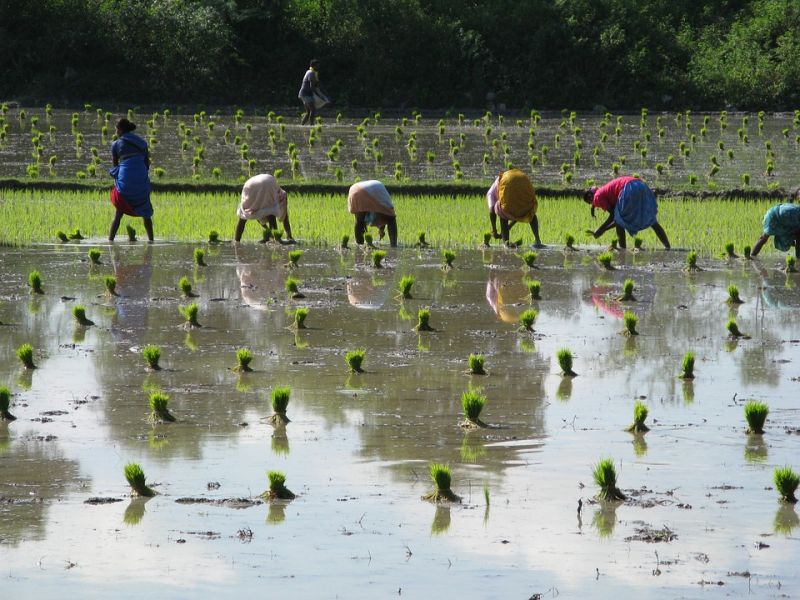Swapping Crops Could Save Water and Improve Nutrition in India
Published on by Water Network Research, Official research team of The Water Network in Academic
A new study published in Science Advances shares a bright outlook: replacing some rice with less thirsty crops could dramatically reduce water demand in India, while also improving nutrition.
BY SARAH FECHT

Rice Plants India South, Representative Image, Source: Pixabay, Labeled for Reuse
India will need to feed approximately 394 million more people by 2050, and that’s going to be a significant challenge. Nutrient deficiencies are already widespread in India today—30 percent or more are anemic—and many regions are chronically water-stressed. Making matters worse, evidence suggests that monsoons are delivering less rainfall than they used to. But a study published today in Science Advances shares a brighter outlook: replacing some rice with less thirsty crops could dramatically reduce water demand in India, while also improving nutrition.
Starting in the 1960s, a boom in rice and wheat production helped reduce hunger throughout India. Unfortunately, this Green Revolution also took a toll on the environment, increasing demands on the water supply, greenhouse gas emissions, and pollution from fertilizer.
“If we continue to go the route of rice and wheat, with unsustainable resource use and increasing climate variability, it’s unclear how long we could keep that practice up,” says Kyle Davis, a fellow at Columbia University’s Earth Institute and lead author on the new study. “That’s why we’re thinking of ways to better align food security and environmental goals.”
The study addresses two key objectives of the Indian government: to reduce undernourishment and improve nutrition, and to promote sustainable water use.
A Grain of Truth
Davis and his colleagues studied six major grains currently grown in India: rice, wheat, maize, sorghum, and pearl and finger millet. For each crop, they compared yield, water use, and nutritional values such as calories, protein, iron, and zinc.
They found that rice is the least water-efficient cereal when it comes to producing nutrients, and that wheat has been the main driver in increasing irrigation stresses.
The potential benefits of replacing rice with alternative crops varied widely between different regions, depending on how much the crops could rely on rainfall instead of irrigation. But overall, the researchers found that replacing rice with maize, finger millet, pearl millet, or sorghum could reduce irrigation water demand by 33 percent, while improving production of iron by 27 percent and zinc by 13 percent.
In some instances, those improvements came with a slight reduction in the number of calories produced, because rice has been bred to have higher yields per unit of land. So in some regions there’s a tradeoff between water and land use efficiency, but Davis thinks that with more attention from scientists, the alternative crops could develop higher yields as well. For now, rice replacement isn’t a one-size-fits-all solution, but something that should be evaluated on a case-by-case basis for each district, he said.
Read full article: Earth Institute (Columbia University)
The Paper: Alternative cereals can improve water use and nutrient supply in India
Media
Taxonomy
- Agriculture
- Sustainable Agriculture
- Irrigation
- Irrigation and Drainage
- Water Scarcity
- Resource Management
- Water Footprint
- Scarcity
- Water Scarcity In Desert area
- Water Footprint Research
- Consumption
- Water Resource Management
- Agriculture